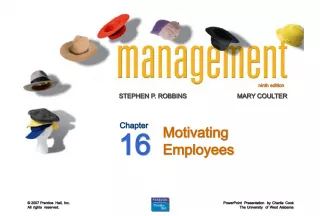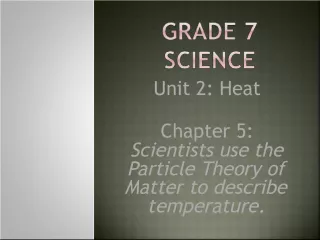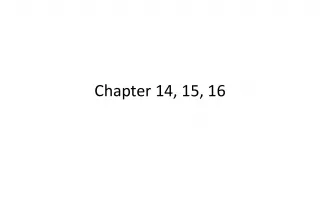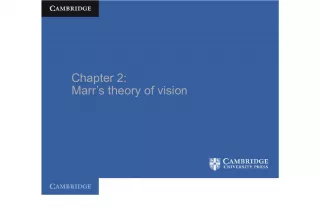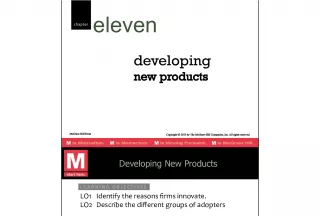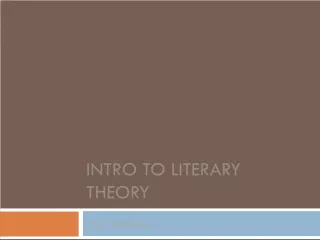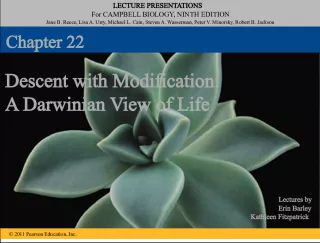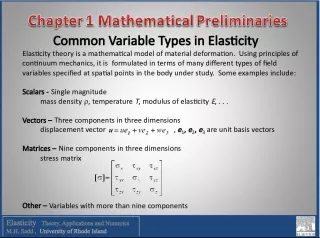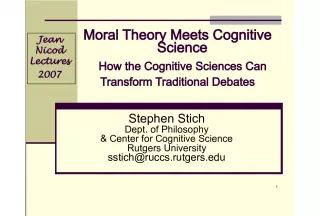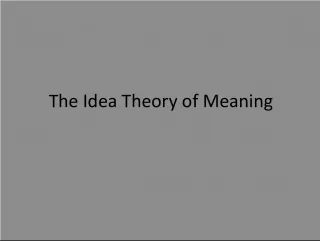Chapter Six - Flexibility: The Rubber Band Theory


This chapter explores the concept of flexibility as the "rubber band theory" where each of us will be no good until stretched. The objectives of this chapter include understanding the limitations
- Uploaded on | 2 Views
-
 vincent47
vincent47
About Chapter Six - Flexibility: The Rubber Band Theory
PowerPoint presentation about 'Chapter Six - Flexibility: The Rubber Band Theory'. This presentation describes the topic on This chapter explores the concept of flexibility as the "rubber band theory" where each of us will be no good until stretched. The objectives of this chapter include understanding the limitations. The key topics included in this slideshow are . Download this presentation absolutely free.
Presentation Transcript
Slide1Chapter SixFlexibility The rubber band theory applies to each of us; we will be no good until stretched.
Slide2Objectivesz How is joint movement limited? z Why is flexibility important? z What is the difference between static stretching and dynamic stretching? z How may the training principles be applied to improve flexibility?
Slide3Objectivesz What safety precautions should be taken when you are engaging in flexibility exercises? How is flexibility evaluated?
Slide4Chapter 6 Valuez Flexibility is an essential fitness component in both your functional life, as well as when you engage in physical activity. z It is important that you stretch to increase the length of both your muscles and tendons. The more range of motion you have, the more your joints can move without injury. Stretching will not only help reduce the chance of injury, minimize muscle soreness, stimulate blood flow, it is also a great stress reliever.
Slide5Vocabularypoint at which 2 bones come together strong, fibrous tissue which attaches one bone to another meaty tissue surrounding bones soft tissues that anchor muscles to bones slowly moving a muscle to its stretching point and holding the position for 15 seconds stretching done in continuous, slow, and controlled manner joint — ligament — muscle — tendon — static stretching — dynamic stretching —
Slide6Vocabularystretching that involves bobbing, bouncing or jerky movements which use the body's momentum form of stretching in which a partner pushes the body beyond the initial limit isostatic stretching — ballistic stretching —
Slide7Evaluate Goals
Slide8What Is Flexibility?z The ability to move body joints through a full range of motion.
Slide9Joints of the Human Bodyz Point at which 2 bones come together z Types y Pivot y Gliding y Hinge y Ball and socket Vocabulary
Slide10Joints of the Human Body
Slide11Joint Movementz Direction is limited by bone structure and can’t be modified z Range of motion is limited by soft tissue and is modifiable through flexibility exercises Objective 1 of 2
Slide12What Limits Flexibility?z Ligament — strong fibrous tissue that attaches one bone to another z Muscle — meaty tissue surrounding bones z Tendon — anchors muscle to bone Vocabulary Objective 2 of 2
Slide13Why Is Flexibility Important?z Needed in daily living z Reduces chance of injury z Increases capacity of joint to move z Prevents muscles from shortening z Helps relieve muscle soreness Objective 1 of 2
Slide14Why Is Flexibility Important?z Helps reduce chance of developing low back pain z Helps relax muscle tightness from injury, fatigue, and emotional tension Objective 2 of 2
Slide15Types of Stretchingz Static — slowly move muscle to stretching point z Dynamic — continuous, slow and controlled z Ballistic — bouncing, jerky movement using body’s momentum z Isostatic — use a partner to stretch beyond your limit Vocabulary Objective
Slide16F.I.T. Applied to Flexibilityz Increase overload by increasing: y F y F requency - number of sessions per day or week y I y I ntensity - distance the muscle is stretched y T y T ime - length of time the position is held, or number of repetitions and sets Objective 1 of 3
Slide17Principle of Progressionz Gradually increase overload by increasing frequency, intensity or time of the exercise Objective 2 of 3
Slide18Principle of Specificityz Stretching exercises will improve flexibility only in joints exercised z Flexibility is specific to each: 1. Individual 2. Joint 3. Sport Objective 3 of 3
Slide19Flexibility Safety Precautions3 Unsafe flexibility exercises 3 Avoid ballistic stretching 3 Don’t use a partner to stretch 3 Start at your appropriate level and progress slowly 3 Stretch by what feels comfortable to you — don’t follow others 3 Combine cardiovascular, muscular strength and endurance exercises to prevent imbalance. Objective
Slide20Flexibility Assessmentz Before beginning testing: 3 Always warm up 3 Avoid ballistic stretching 3 Move in a slow, controlled way Objective
Slide21Flexibility Assessmentz Tests y Sit-and-reach y Shoulder lift y Broomstick dynamic flexibility Vocabulary Objective
Slide22FlexibilityMinimum principles of training guidelines z F z F requency - at least 3 times per week z I z I ntensity - stretch slowly until mild tension is felt z T z T ime - static: hold stretch for 15 to 30 sec
Slide23Setting Flexibility Goals Less close exceeds Difference between <10cm >1 to 10 cm at or above Test score & health standard standard Recommended range 5 to 15cm 1 to 4 cm 0 to 2 cm
Slide24Flexibility Exercisesz Upper body and torso z Neck z Triceps z Chest and biceps z Shoulder z 3-prong support side stretch
Slide25Flexibility Exercisesz Lower back stretch z Hamstring z Groin z Quadriceps z Calf z Achilles tendon z Shin
Slide26Harmful Stretching Positionsz Head circles z Arm circles z Plow z Sitting quadriceps stretch z 4-count toe touch z Hurdle stretch z Deep knee bends
Slide27Record Progress toward Goal
Slide28Summaryz Flexibility is the ability to move body joints through a full range of motion z The direction of joint movement is limited by the way it is structured z Four types of stretching z Flexibility is limited by soft tissue which includes ligaments, muscles, and tendons
Slide29ObjectivesHow is joint movement limited? Why is flexibility important? What is the difference between static stretching and dynamic stretching? How may the training principles be applied to improve flexibility?
Slide30ObjectivesWhat safety precautions should be taken when you are engaging in flexibility exercises? How is flexibility evaluated?
Slide31Study Questionz Stretching exercises will help A. Avoid injuries B. Build strength C. Develop cardiovascular endurance D. None of the above Answer
Slide32Answerz Stretching exercises will help A. Avoid injuries B. Build strength C. Develop cardiovascular endurance D. None of the above
Slide33Study Questionz Joints can be prepared for vigorous physical activity by doing A. Push-ups B. Sit-ups C. Stretching D. Weight training Answer
Slide34Answerz Joints can be prepared for vigorous physical activity by doing A. Push-ups B. Sit-ups C. Stretching D. Weight training
Slide35Study Questionz Muscles and other connective tissues should be stretched A. 3 times per week B. Only before jogging C. Once a week D. When it is cold Answer
Slide36Answerz Muscles and other connective tissues should be stretched A. 3 times per week B. Only before jogging C. Once a week D. When it is cold
Slide37Study Questionz To increase flexibility, you must overload the muscle by: A. Increasing your running distance B. Lifting heavy weights C. Performing isometric exercises D. Stretching farther than normal Answer
Slide38Answerz To increase flexibility, you must overload the muscle by: A. Increasing your running distance B. Lifting heavy weights C. Performing isometric exercises D. Stretching farther than normal
Slide39Study Questionz Which exercise below is a safe exercise for developing flexibility? A. Achilles tendon stretch B. Deep knee bends C. Four-count toe touch D. Hurdle stretch Answer
Slide40Answerz Which exercise below is a safe exercise for developing flexibility? A. Achilles tendon stretch B. Deep knee bends C. Four-count toe touch D. Hurdle stretch
